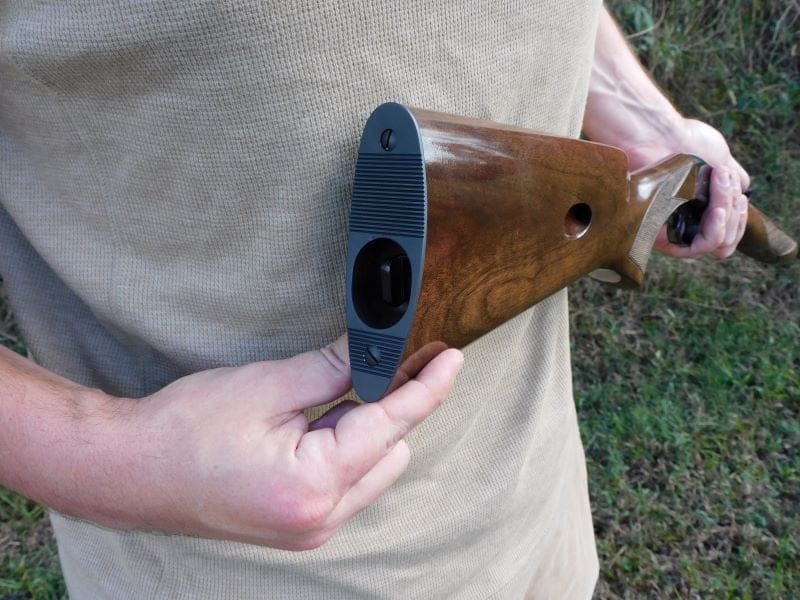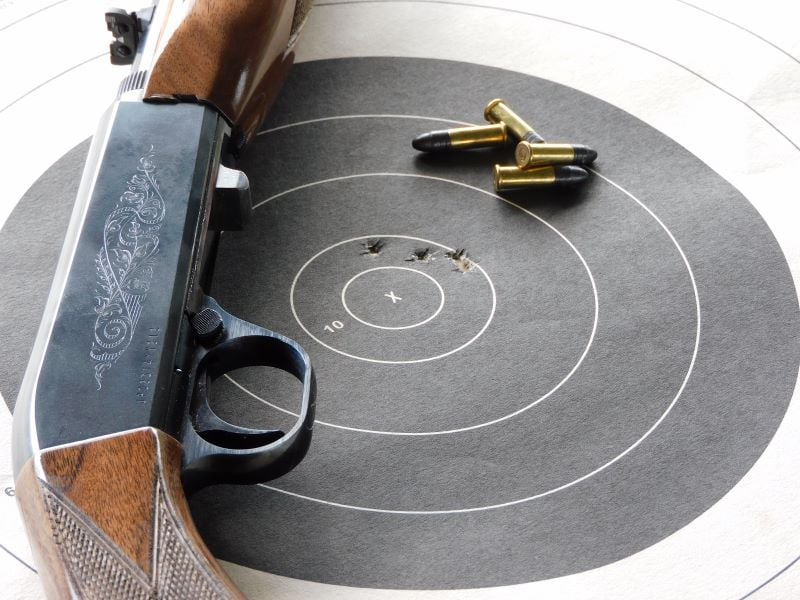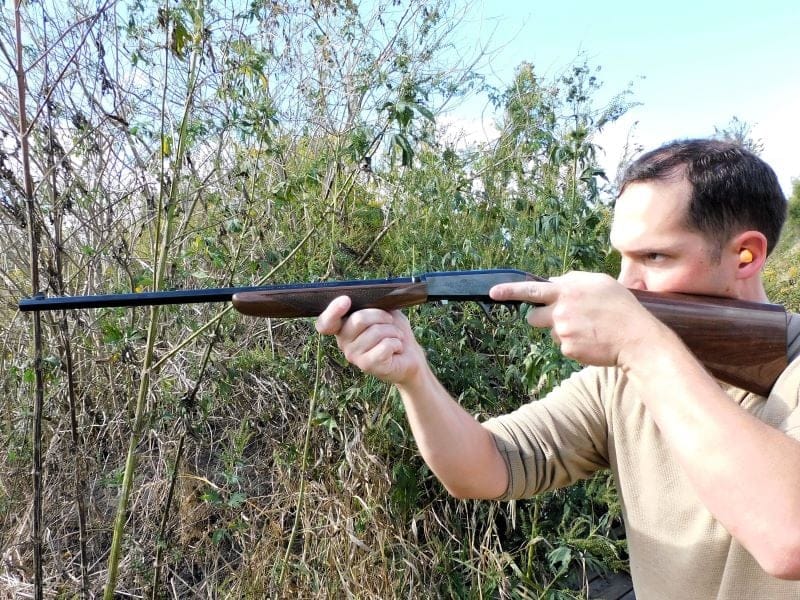Change is inevitable. Companies go bankrupt. Fads come and go. Empires collapse. Movies end. But in the gun world, the more things change, the more they stay the same. For all the advances, the core tenants of putting more rounds on target reliably and easily remain. Case in point: the Browning Semi-Automatic 22.
The Browning SA 22 was patented by John Moses Browning in 1912. Elegantly odd by today’s standards, the SA 22 is mechanically an autoloading rifle chambered in .22 LR. The world is full of semi-auto .22s, but the SA 22 is the first. I say “is” because it is still in production today and is still an option to reckon with.

The Browning SA-22: A Brief History
A rifle chambered in .22 rimfire was as much a tool yesterday as it is today. By default, today’s .22 rifles are probably going to be semi-automatic. Rifles like the Ruger 10/22 or the Marlin Model 60, among many others come to mind. In 1912, the autoloading rifle was just starting to be worked out in larger calibers. Most .22 rifles were single-shot or pump action. The Browning SA 22 gave the shooter a total of fifteen rounds of .22 Short ammunition that could be fired as quickly as you could pull the trigger. A few years into its production run, an eleven-shot version of the rifle chambered in .22 LR was introduced.
Fabrique Nationale of Belgium manufactured and marketed the rifle for the world market from 1914 until 1974. Browning sold his rights to the American market through Remington, who produced the rifle as Remington Model 24 and 241. Remington produced their version from 1919 until 1949. From 1974, all production for all markets was done by Miroku in Japan. Production of the .22 Short model ended in 2017, but current production of the .22 LR model continues with several available models.
The SA 22 is available as a Grade I rifle with a checkered walnut stock and blued receiver, a Grade II with an octagonal barrel and brushed nickel finished receiver, and a Grade VI with either a grayed or blued receiver with gold inlay.
What’s in the Box?
The Grade I is the most basic version of the SA 22 offered by Browning and it is the most common version made historically. It is also the version I chose. It comes equipped with a round 19.75-inch barrel and a blued receiver that is scrolled with laser engraving on both sides. It also comes stocked in black walnut with cut checkering on the semi-pistol grip and the forend. Aside from these differences, it shares the same mechanical features as any other SA 22 made in the last hundred years.

Like all other .22 rimfire autoloaders on the market, the SA 22 is a blowback design that relies on spring pressure and the weight of the bolt to cycle properly. But how it loads and cycles is a stark departure. The SA 22 is fed from a tubular magazine that is housed in the buttstock. A turn of the locking tab recessed inside the steel buttplate followed by a tug will pull the magazine spring out of the rifle.

From there, the ammunition is loaded into an angular hole on the left side of the stock. The integral bolt and charging handle are located at the bottom of the rifle in front of the trigger guard instead of off to the right side. With every shot, the empty brass ejects from the bottom of the rifle.
The tubular magazine is protected from damage by the stock, and it echoes the loading system of the 1860 Spencer rifle of Civil War fame. The later Nylon 66 also loads the same way. The bottom charging/ejection allows the rifle to be inherently ambidextrous and it prevents hot gas or metal from an errant cartridge from hitting the shooter in the face, which was a common problem with rifles from the era.

Like all SA 22s, this one is a takedown rifle that locks together via interrupted threads. The rifle comes disassembled in the box. Assembly is as simple as pulling the bolt back slightly, mating the two halves, and twisting the barrel on. There is a recessed locking latch on the fore-end that is pushed into a notch in the receiver, aligning and locking the two halves completely. Early takedown rifles tended to shoot loose over time, so Browning incorporated a locking nut in front of the barrel threads that could be twisted to tighten or loosen the lockup.
The SA 22 is a trim rifle that weighs only 5.2 lbs. loaded and assembles to an overall length of only thirty-seven inches. The rifle comes with a gold-beaded front post and a folding rear-notch iron sights. The rear sight has a larger notch that tapers to a fine point.

The top of the notch can be used to compensate for drop at distance, while the bottom of the notch is best for at ranges where there is no discernable drop with the .22 LR cartridge. New rifles made by Miroku have barrels that are drilled and tapped for a proprietary Browning scope mount, but most SA 22s will have a traditional 3/8-inch dovetail milled into the receiver.
Browning SA 22: The Shooting Experience

It has been my experience that those who purchase Browning SA 22s tend to keep them. Aside from some that are new on the shelf, I encountered more Brownings through collection liquidations. The SA 22 certainly is not the most up-to-date .22 rifle on the market today but it is an heirloom quality rifle that can still compete in its own way.
My Grade I SA 22 is just nice enough to be considered an heirloom but not so much as to be ashamed to actually use it. I have owned it for two years and only put about 1,000 rounds downrange with it. That is not much for a .22 rifle, but with the Browning, there are more smiles (or in my case, reluctant grimaces) per round.
Loading the SA 22 is certainly not as easy as pushing in a pre-loaded box magazine, but I find it to be better than most tubular magazine designs on the market. The magazine spring tab is turned in either direction to unlock and the magazine spring can be pulled completely out of the rifle or left hanging out of the butt while you drop in your rounds. Some shooters use preloaded tubes to load faster, but I am partial to carrying Bianchi Speed Strips. These hold ten rounds and once you strip them off, loading is as easy as dropping the rounds and letting gravity be your friend.
Most tube-fed .22 rifles have an under-barrel magazine that is prone to damage and debris collection, but the Browning’s buttstock tube is better protected. While hunting and shooting in cold weather, I also found the Browning to be easier to load. The magazine tube is easy to manipulate, and loading is as easy as dropping the ammunition in nose first. With numb hands and freezing gun oil, I have been completely unable to free under-barrel tubes for loading.
On the range and in the field, I have fired all manner of ammunition from inconsistent Remington 40-grain Thunderbolts to warm CCI Stinger 32-grain hypervelocity loads without a failure to fire or feed. It even cycles lower-powered standard velocity ammunition without issue. The robust firing pin and dual extractors do their job well, even as the rifle gets dirty. But to be as transparent as possible, the SA 22 gets a complete cleaning after every range trip.
While reliability has been spot on, accuracy varied. The very best ammunition I have found that groups the best are the CCI Standard Velocity and CCI Blazer 40-grain loads. Either of these will produce five-round groups inside one inch at 50 yards with the factory iron sights.

The bigger the pack of ammunition, the bigger my accuracy gap Remington Thunderbolts and Winchester Super X ammunition generally widened my groups to 2-3 inches at the same distance. I have had very good luck with Federal Automatch 40-grain ammunition for pistol shooting, but I could never get those pills into a group smaller than four inches.
Accuracy is reflective of my eyes and the ammunition, but the setup of the rifle has a part to play. The SA 22 is tapped on the barrel for a proprietary scope mount that only uses proprietary Browning rings. Leupold also made a mount for the SA 22, but it did not fit my rifle at all. While I would give for a mount with a Weaver or Picatinny rail, I never put an optic on my SA 22 as I found the iron sights to be well set up for shooting inside 100 yards. The gold-beaded front sight contrasts with different targets regardless of the sun’s glare or shadows and is small enough to not cover small targets.

Despite its lightweight, the SA 22 is a proportional rifle. It is light enough to be wielded easily by a child, but the buttstock has a 14-inch length of pull to fit my frame perfectly. Ordinarily, I have trouble shooting lightweight rifles because any shake is magnified, but the Browning’s weight is evenly distributed in the buttstock and the barrel with the rifle balancing right at the ejection port. It is both fast to get on target and just muzzle heavy enough to hold steady while being easy to carry in the field without the benefit of sling attachments. The accuracy calculus is helped further by the trigger. It has no audible or tactile reset, but it breaks clean at 3.25 lbs.
The rest of the rifle offers up by few complaints. The knurled cross-bolt safety has a wider end on the right side and is easy to disengage. Although it was a culture shock to wield a rifle without a traditional ejection port on the side, the lefty in me learned to appreciate the bottom ejection. There is no gas flying anywhere near my face, but hot brass has landed on my outstretched support arm once or twice, particularly when shooting from the bench. This is a quirk particular to the SA 22 and a rare criticism among those of us who own them.
The Bottom Line
The Browning SA 22 gave birth to the genre of .22 rifles we know all too well today. If you want to dispatch pests, take small game, or learn and teach the fundamentals, they are hard to beat. Although the newer SA 22s are somewhat limited by optical options, the rifle is otherwise equally as capable. Although you can build a Ruger 10/22 with next-to-no Ruger parts in it, my Browning is more accurate than a stock Ruger and it is ambidextrous by design. It is a Browning design with at least 400,000 units sold. It is instinctive to take apart and just prolific enough to get spare parts when you need them. What the Browning SA 22 lacks in firepower and malleability, it makes up for in both performance and style. It is a rifle with classic lines, but it still does what all .22 semi-autos should do–put holes in things quickly and reliably.

